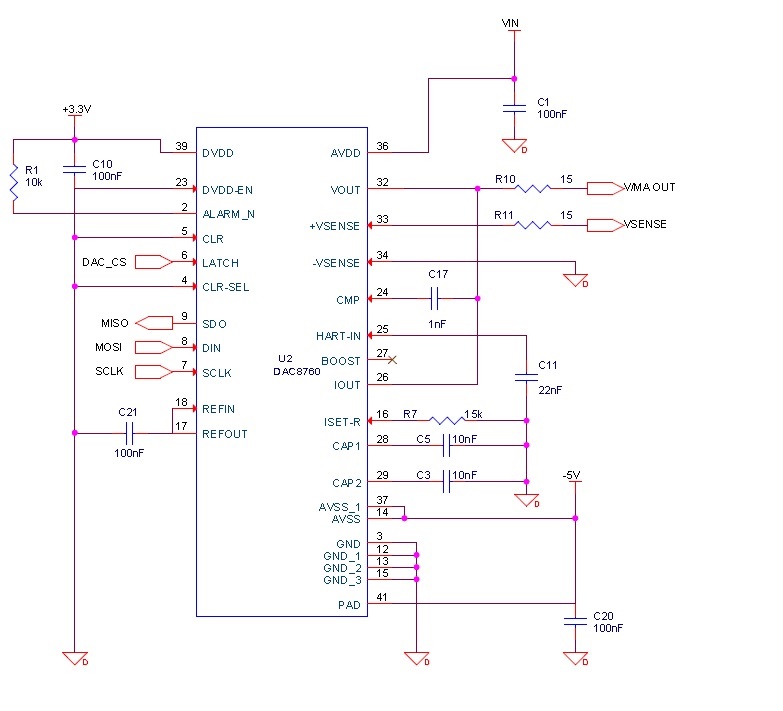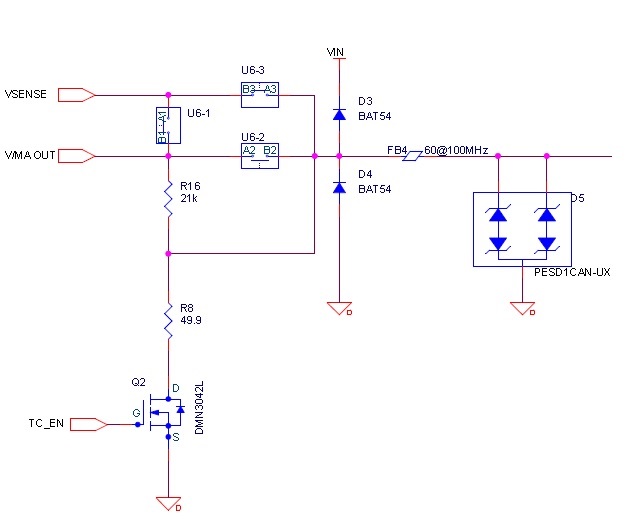We are developing a product that uses this chip, and have the V and mA outputs tied together. We did not enable the DUAL OUTEN bit, as per the warning in the app note. The issue is, both the voltage and current outputs work fine for a few days, but then the mA output can only go up to 0.930 mA, for no apparent reason. This is the second prototype board of ours that has this problem. On the last board, I ran a test overnight with the output set for 20 mA. When I returned this morning, it was still outputting 20 mA. I removed power, removed the PC board from our enclosure, then powered it back up again. The output would only go to 0.973.
Here is our initialization code:
v_DAC8760_Write(DAC8760_WRITE_RESET, 1);
v_DAC8760_Write(DAC8760_WRITE_CONTROL, CLRSEL);
Later in the code when the output type/range is selected, this is what we do:
v_DAC8760_Write(DAC8760_WRITE_CONTROL, (u16_Range | OUTEN | REXT | OVR));
We are using a MAX14777 quad analog switch (U6), so that we can switch VSENSE in such a way that we can also provide a thermocouple output as well as Voltage and Current outputs, without having errors due to the switch on resistance.
Again, everything works fine for a few days, then suddenly, the mA output malfunctions. With the DAC count set to 0xFFFF, the output is 0.930 mA. With the DAC count set to 0x0000, the output is 0.915 mA. Here is a part of our schematic, I can't include everything because of confidentiality and company policy.



